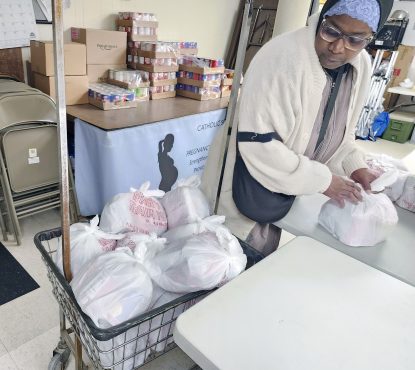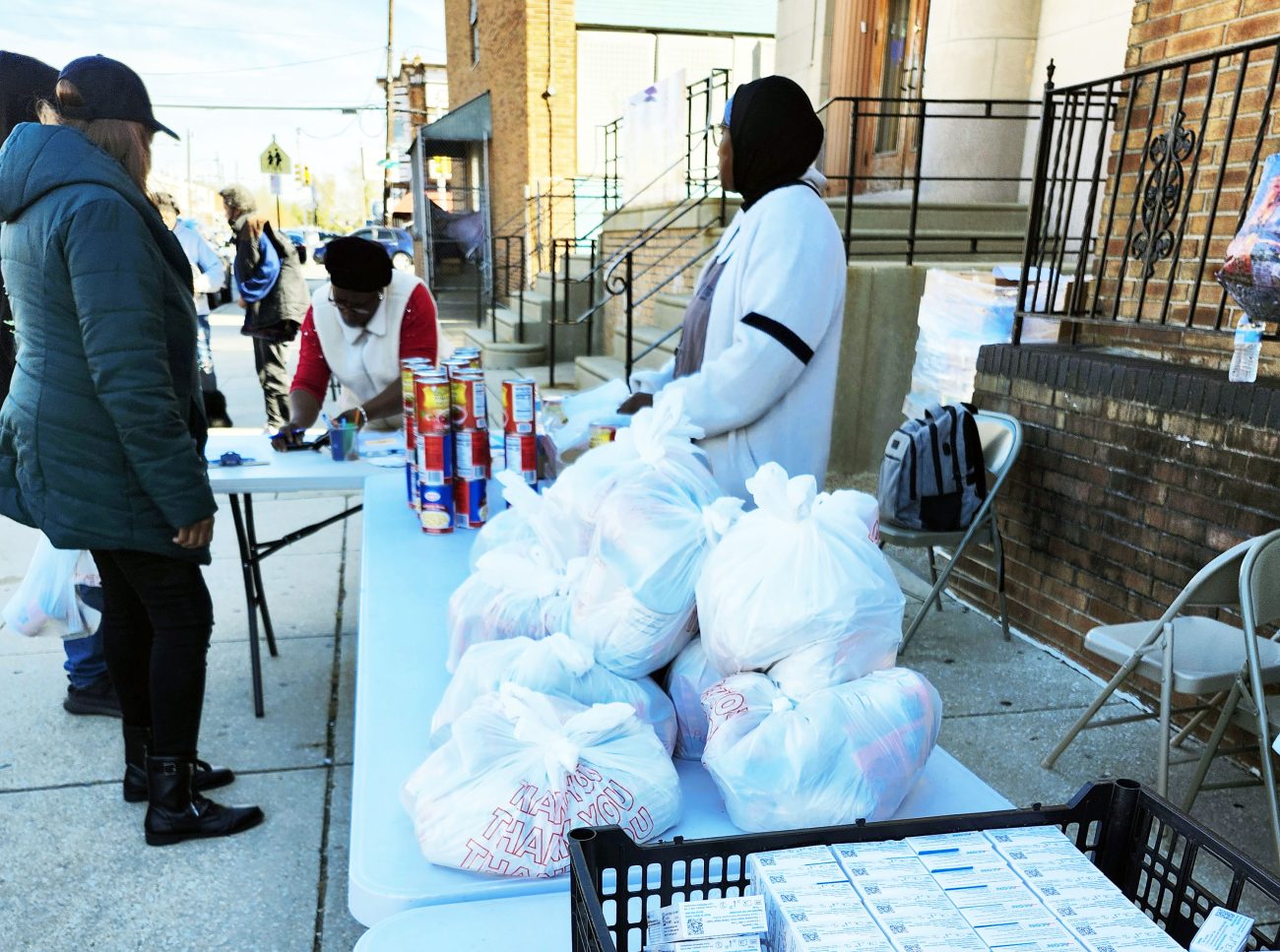Food assistance programs throughout the Archdiocese of Philadelphia are experiencing a dramatic increase in demand, a direct result of the federal government’s 43-day shutdown.
Local food pantry operators report seeing double the number of families they typically serve and some have closed their doors early after running out of food.
“This is like a tsunami,” said Patrick Walsh, director of programs at Martha’s Choice Marketplace and Community Farm. The Catholic Charities of Philadelphia program has seen a 100% increase in visits since the beginning of the year. “It’s an astronomical crisis.”
The longest shutdown in U.S. history began at midnight Sept. 30 and ended Nov. 12 after the president signed a bill funding the government through Jan. 30.
The major reason for the recent rise in requests for food is the chaos surrounding Supplemental Nutrition Assistance Program (SNAP) benefits, formerly known as food stamps. Absent a budget, millions of SNAP recipients did not receive payments in November.
Also contributing to the increase in pantry visitors are the thousands of federal workers who did not receive paychecks during the six-week budget impasse.
Compounding all these factors is higher costs for food.

A volunteer prepares bags of nonperishable food for distribution at Catholic Charities of Philadelphia’s Southwest Family Service Center in Philadelphia Nov. 5. (Photo by Matthew Gambino)
Liz Hagedorn has been executive director of Catholic Charities’ Nutritional Development Services since 2017. NDS addresses hunger and food insecurity across the region, supporting 50 food pantries, food cupboards, and food distribution programs. In 2024, NDS’ Community Food Program served 169,000 people.
Hagedorn hasn’t seen demand like this since the COVID pandemic. “People are really frightened and anxious,” she said. “Like the pandemic, they don’t know what’s going to happen from one day to the next.”
Jim McPhail helps run the food pantry at Blessed Virgin Mary Parish in Darby, Delaware County. He, too, has observed the public’s fear, anxiety, and anger, in some cases — “though it’s not directed at us,” He said.
The pantry, open to the public Mondays and Thursdays, had provided food to an average of 50 families a week. “Last week we saw well over 100, and we had to turn people away,” he said.
“It is, of course, a relief to have the shutdown end, but we anticipate that need for food will continue,” said Heather Huot, Secretary and Executive Vice President of Catholic Charities of Philadelphia. “With the permanent changes that have gone into effect for SNAP benefits and families struggling to afford rent, utilities, and health care, we are anticipating increased need for food.”
Full benefits are expected to resume soon for the 42 million SNAP recipients nationwide, but the timing will vary by state. The SNAP population in Philadelphia is more than 471,000, including children, seniors, people with disabilities, and the working poor.
“It is truly a struggle … even with two working parents, to put food on the table and take care of other (financial) responsibilities,” Hagedorn said.
Martha’s Choice, Montgomery County’s most visited pantry, served more than 4,100 families in the last 12 months. Although many customers work at least one job, often more, they still live paycheck to paycheck.
They must make difficult choices every day, said Director of Operations Eli Wenger. “Are they going to pay rent? Are they going to get medical services? Or are they going to buy food?” he said.
Cathie Squillace helps run the pantry at Blessed Virgin Mary Parish with Jim McPhail. With food supplies dwindling, the parish recently put out a call to the community. “A lot of people still love and still care and still want to help, even if the government doesn’t,” Squillace said.
For example, the response from St. Mary Magdalene School was overwhelming and immediate.
“They came through in a big way,” McPhail said. While a one-time food drive is helpful, “a monthly drive is even better.”
He is grateful for the area churches that make regular monthly donations, and he hopes more will do the same.
“It’s really beautiful how people are looking out for their brothers and sisters,” Hagedorn said. Walsh of Martha’s Choice agreed. “That’s been the most heartening part. People are coming out of the woodwork to respond. But we do need more.”
If you want to help or need food, visit Food Cupboards and Meal Sites for Children for an interactive map of programs supported by NDS’ Community Food Program. Some churches also operate their own pantries. Residency requirements and operating hours vary.
Food pantries need healthy, non-perishable food, including:
-
- high-protein canned staples (meat and fish, beans and lentils, chili and soups)
- peanut butter and jelly
- canned fruits (in water, not syrup) and vegetables
- whole-grain pasta and brown rice
- canned and jarred sauces
Some pantries, including Martha’s Choice, also accept personal care items, such as diapers, soap, detergent, and feminine hygiene products.
For a more comprehensive list, review Top 9 Items Food Banks Need the Most at the Move for Hunger website. Move for Hunger is a national non-profit based in South Jersey.
Cash contributions to Catholic Charities of Philadelphia are also welcome and provide additional support to families experiencing food insecurity. Learn more by visiting Donate – Catholic Charities of Philadelphia.




Share this story